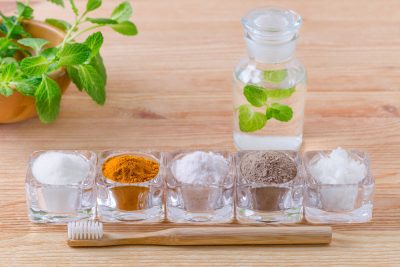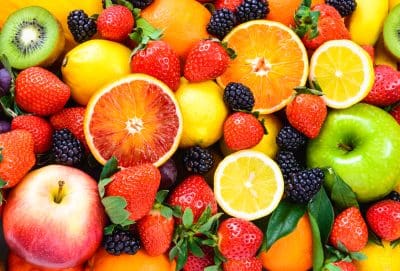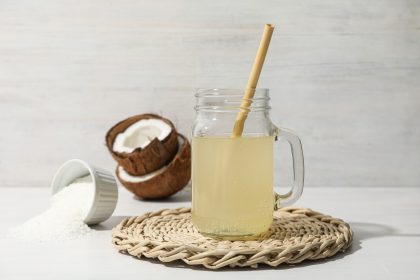High blood pressure, often called hypertension, affects millions, silently straining hearts and arteries. While medication and exercise play key roles, diet can be a game-changer. Three common foods—berries, leafy greens, and oats—stand out for their potential to ease this condition. Found in most kitchens, these ingredients offer accessible ways to support heart health. Below, we explore how these foods, numbered for clarity, may help manage hypertension, their benefits, and practical ways to enjoy them daily.
1. Berries: Tiny bursts of heart health
Berries—think blueberries, strawberries, and raspberries—pack a punch in small packages. These vibrant fruits brim with antioxidants, particularly anthocyanins, which give them their rich colors. Studies suggest these compounds relax blood vessels, improving flow and easing pressure on artery walls. Fiber in berries also helps regulate cholesterol, a factor tied to hypertension.
Beyond science, berries fit seamlessly into meals. A handful tossed into morning yogurt adds sweetness without spiking sugar levels, unlike processed snacks. Blending them into smoothies creates a quick lunch boost, while frozen options stretch budgets year-round. Even a small daily serving, like half a cup, can make a difference. Their versatility means no one’s stuck eating the same dish twice, keeping routines fresh.
The catch? Fresh berries can be pricey in winter. Opting for frozen or buying in bulk during summer farmers’ markets solves this. Washing them well removes dirt, ensuring every bite is clean. For those watching sodium, pairing berries with unsalted nuts avoids counteracting their benefits. This simple fruit, already a staple for many, holds promise for calmer arteries.
2. Leafy greens: Nature’s pressure regulators
Leafy greens, like spinach, kale, and Swiss chard, are nutritional heavyweights. They’re loaded with potassium, a mineral that helps kidneys flush excess sodium, a known driver of high blood pressure. Nitrates, naturally found in these greens, also widen blood vessels, promoting smoother circulation. Magnesium rounds out the trio, supporting muscle and heart function.
Adding greens to daily plates is easier than it sounds. A spinach salad with lunch, dressed in olive oil and lemon, doubles as a heart-friendly side. Kale blends into soups or casseroles, absorbing flavors without overpowering. For breakfast, tossing chard into eggs scrambles up routine. Even picky eaters can handle greens when chopped finely into pasta sauces, hiding their texture but keeping the perks.
Cost is rarely a barrier—greens are affordable, especially when bought in bunches or grown in small pots at home. The hurdle is prep time. Washing and chopping feel tedious, but bagged options, rinsed and ready, save minutes. Freezing extras prevents waste, locking in nutrients for weeks. For anyone aiming to dial back hypertension, these humble leaves offer a daily dose of relief.
3. Oats: A hearty shield for arteries
Oats, whether rolled, steel-cut, or instant, bring comfort and science to the table. Their star player is beta-glucan, a soluble fiber that lowers cholesterol by binding to it in the gut, reducing strain on blood vessels. Oats also stabilize blood sugar, preventing spikes that can stress the heart. Low in sodium and high in potassium, they’re a natural fit for pressure-conscious diets.
Mornings often start with oatmeal, but its uses stretch further. A bowl with sliced banana and a drizzle of honey fuels the day without heavy fats. Blending oats into flour for baking muffins swaps out refined grains, keeping snacks light. Even savory dishes, like meatloaf, benefit from oats as a binder, cutting salt-heavy breadcrumbs. A small serving, around a half-cup dry, delivers steady benefits.
The challenge lies in avoiding pitfalls. Prepackaged oat packets often hide sugar, undoing heart gains. Choosing plain oats and adding natural sweeteners like fruit keeps things clean. Cooking time varies—steel-cut takes longer, but overnight soaking cuts effort. Budget-friendly and shelf-stable, oats make hypertension management practical, turning a pantry staple into a health ally.
Why these foods matter
Hypertension doesn’t always announce itself with symptoms, but its risks—heart attacks, strokes, kidney strain—are real. Diet alone can’t replace medical care, but it shifts the odds. Berries, greens, and oats target key drivers like sodium overload, stiff arteries, and cholesterol buildup. Their nutrients work in tandem, offering more than any single pill could.
Availability adds to their power. Unlike pricey supplements, these foods sit in most grocery aisles or corner stores. They’re flexible, fitting cuisines from soul food to vegan, so cultural staples stay intact. Preparation is low-skill—no chef’s hat needed to toss berries on cereal or wilt spinach in soup. For those juggling busy lives, these small tweaks fit without upending routines.
Barriers and workarounds
Nothing’s perfect, and diet changes face hurdles. Cost creeps up for berries out of season, though frozen or dried versions stretch dollars. Greens spoil fast, but buying smaller batches or freezing extras helps. Oats, while cheap, can bore taste buds—spices like cinnamon or savory herbs keep things lively. Time’s another snag; quick options like pre-washed greens or instant oats ease the load.
Access varies too. Food deserts, common in low-income areas, limit fresh produce. Community gardens and co-ops are sprouting to fill gaps, but progress lags. Taste preferences matter—some shun kale’s bite or oats’ mush. Experimenting with recipes, like blending greens into dips or baking oats into bars, wins over skeptics. These fixes don’t erase every obstacle, but they make the path smoother.
Building a habit
Starting small keeps things manageable. Swapping one snack for berries, adding a side of greens to dinner, or trying oats for breakfast sets a foundation. Tracking portions helps—apps or notebooks log what works. Mixing flavors, like pairing oats with nuts or greens with garlic, prevents monotony. Over weeks, these choices stack up, potentially easing blood pressure alongside lifestyle shifts like walking or stress management.
Communities pitch in too. Food banks now stock fresh produce, and urban farms sell greens at sliding scales. Cooking classes, often free at libraries, teach tricks to make oats or kale craveable. City programs push farmers’ markets to accept benefits, bringing berries closer to tight budgets. These efforts, though patchy, signal a shift toward food as medicine.
A heart-forward future
The trio of berries, leafy greens, and oats offers no miracle cure, but their impact runs deep. Each bite—sweet, earthy, or hearty—nudges arteries toward ease, countering hypertension’s quiet threat. For infants or seniors, workers or retirees, these foods cross life’s stages, affordable and familiar. Challenges like cost or access persist, but workarounds, from frozen berries to quick-cook oats, keep goals in reach.
Kitchens are already stocked with these allies. A smoothie, a salad, a warm bowl—each is a step toward calmer blood pressure. As communities grow gardens and share recipes, the path widens, inviting all to eat for health. The heart, under strain, finds relief in these simple foods, proving small choices can reshape a big fight.

















